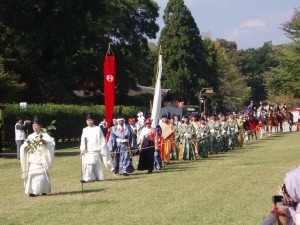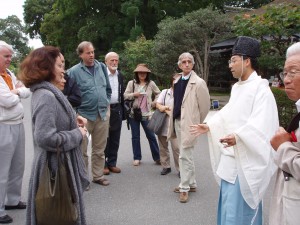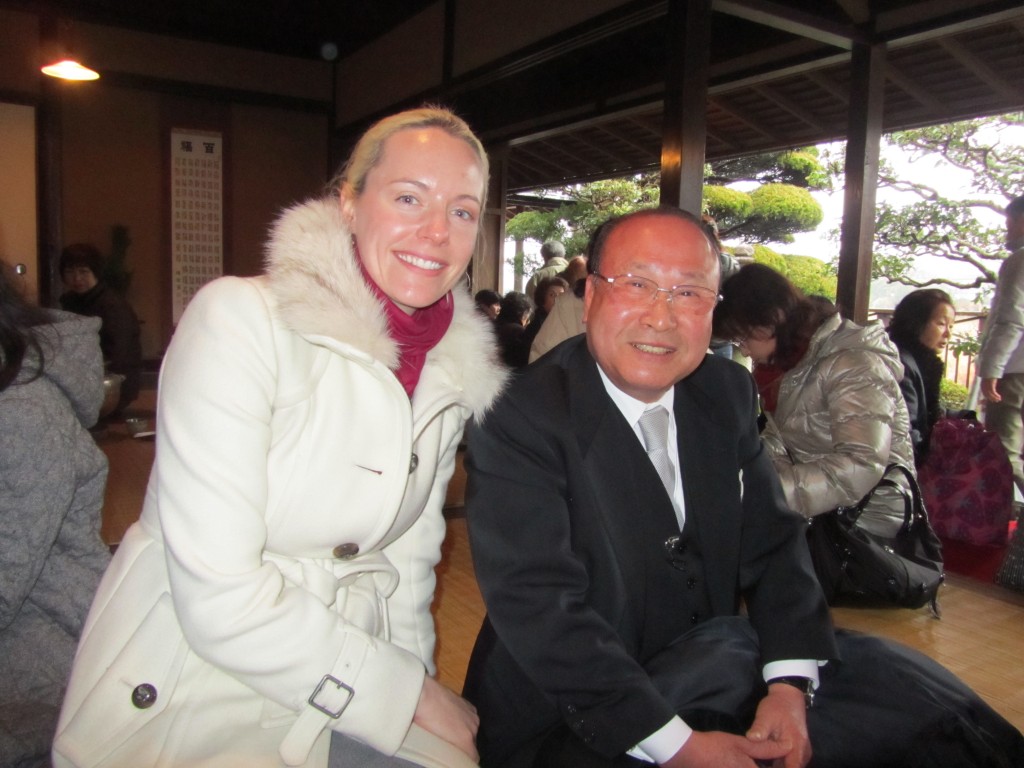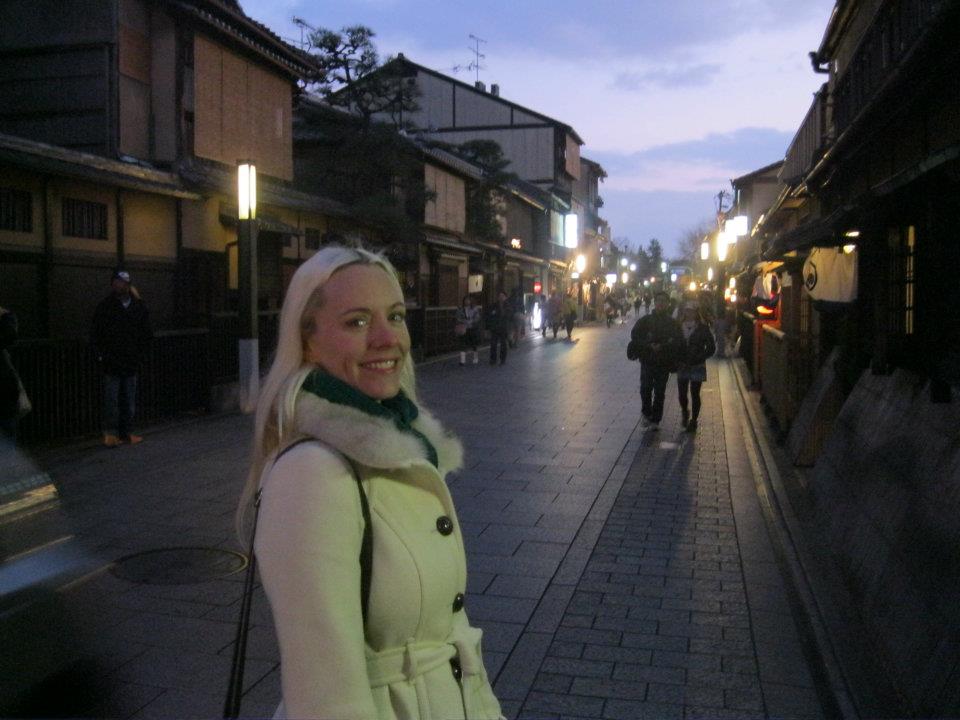 How and why did you become a volunteer at Kamigamo Jinja (Kyoto)?
How and why did you become a volunteer at Kamigamo Jinja (Kyoto)?
When I learned that my husband was going to Afghanistan for 2 years I decided that I would return to Japan during that time. I packed up my house in Virginia and started planning my immediate move to Kyoto. My original intention was to study Japanese culture at the NCC Center for the Study of Japanese Religions in Kyoto. However, there was some difficulty within the school and they were unable to accept students for the next term.
I reached out to several expats in Kyoto with ties to Shinto and, thanks to Green Shinto, was eventually introduced to an English speaking priest at Kamigamo-Jinja, Mr. Inui. I took a huge risk in coming to Japan without a visa; I secured housing on my own, signed a year-long lease, and was determined to secure a visa studying Shinto. This impressed Mr. Inui at our meeting and, in typical Japanese fashion, weeks went by while he negotiated my case to the Chief Priest who agreed to accept me as a researcher.
What have your duties involved so far?
I am expected to attend as many shrine functions as I am invited to. These range from simple rituals to very elaborate ceremonies. Typically, if there is a lunch hosted for the guests afterward I stay and have lunch with the other guests, the Chief Priest, and the Deputy Chief Priest. I have also helped with clean-up after very busy times at the shrine.

One of several Kamigamo festivals at which there is an English language commentary
How about the language problems? How do you manage?
Several members of the shrine staff speak English and are incredibly helpful in answering questions and guiding me. I believe that Kamigamo Jinja has made a great effort at communicating with me and making allowances for my lack of Japanese language skill. At many ceremonies the “MC” will speak in both Japanese and English explaining the ritual. I can speak rudimentary Japanese and I am able to follow directions during rituals that have no English explanation. Afterward I am always encouraged to ask questions on anything I may not have understood.
What is the best experience you’ve had so far?
There are two that come to mind. First, I attended the New Years Eve ceremony and New Years Day ceremony at Kamigamo Jinja. Both were very elaborate and elegant. It was also one of the few times a year that the Honden was opened for food offering to be placed inside. These were very long rituals and the only ceremonies I have attended so far where we visited and prayed at all the smaller shrines (23 total) within Kamigamo Jinja.

Inui Mitsutaka explaining Shinto matters to a group of interested visitors
The second would be joining the staff and several of the members of Kamigamo Jijna on their pilgrimage to Ise Grand Shrine (approx. 40 people). Because Kamigamo Jinja is the second most important shrine in Japan, our group was accorded special access at Ise Grand Shrine. We entered the inner courtyards at both Geku and Naiku where we were led in prayer by the Chief Priest of Kamigamo Jinja. Due to his high station within Shinto hierarchy, he is one of the few people in Japan allowed to stand in front of the inner torii. We witnessed purifying dances performed inside Kaguraden (Hall of Sacred Music and Dance).
After our visit to Ise Grand Shrine the group dined together and I was given the seat of honor across from the Chief Priest and his wife. He explained in detail the dances that we watched and then invited me to join him exploring Ise City after lunch. He was born in Ise and I was very honored that he spent his time giving me a tour and reminiscing about his childhood.
What difficulties have you encountered?
There have been occasions where misunderstandings arose due to lack of complete communication. I once arrived for a ceremony I had been invited to but apparently when I accepted the invitation they misunderstood my meaning and thought I was declining. When I did arrive, I was unexpected and they had to make last minute adjustments so that I could attend. It caused difficulty for them and embarrassment for me. Now I know to be very clear when I accept an invitation.
What do you think are the strong points of Shinto, and what can it offer non-Japanese?
Shinto is very different from what most Westerners expect in religion, and that difference offers outsiders a great way to expand their perspective. Personally speaking, Shinto’s ideas of purification and reverence of nature are fascinating for me. Shinto has no commandments, and no codes. You are simply expected to live your life in reverence to the kami and nature.

Rachelle with the Chief Priest of Kamigamo Jinja on the trip to visit Ise jingu

Rachelle off duty from her shrine duties, exploring Kyoto's night life

I would like to do this. I have actually wanted to enter into a Shinto shrine since I was 23 (31 now). I have an N2 basis of Japanese and have lived in Japan for around 5 years.
Someday, after getting my N1, I would like to enter one of the Shinto schools in Tokyo, Mie, Or branch school in Osaka) or enter an apprenticeship at a shrine. Could you please give me some information on whom I may be able to contact to make this a reality?
Thank you in advance and I highly appreciate your article.
Thank you for the message, and I’ll reply off list…